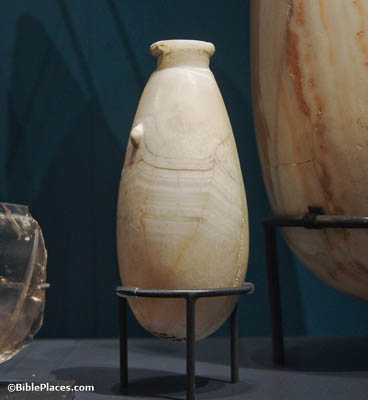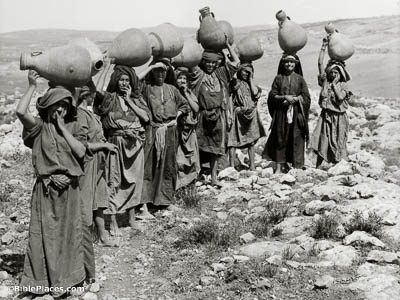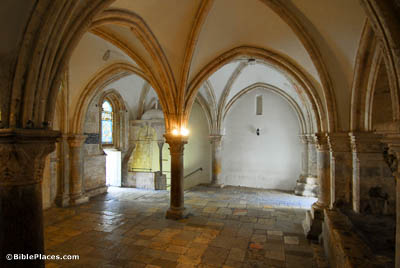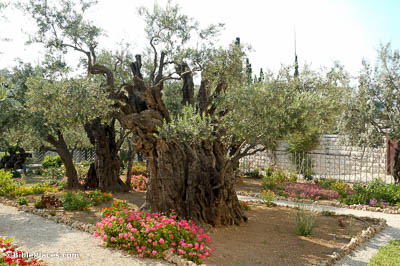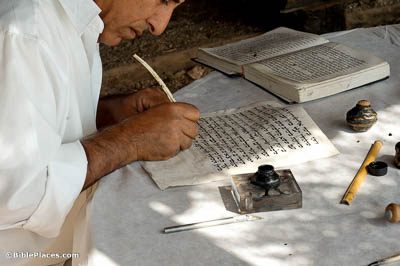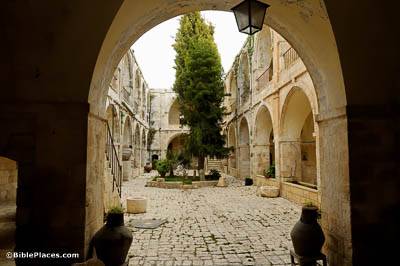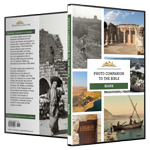While He was in Bethany at the home of Simon the leper, as He was reclining at the table, a woman came, having an alabaster flask of perfume of pure nard . . . she broke the flask and poured it over his head (Mark 14:3).
Alabaster, beautiful as it is, has been used as a material for perfume bottles since the Bronze Ages. This particular example is from centuries before Jesus’s time, but the woman’s flask likely looked similar—perhaps with a long, thin neck that was more easily broken.
